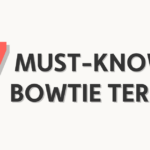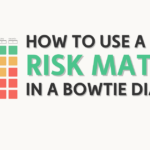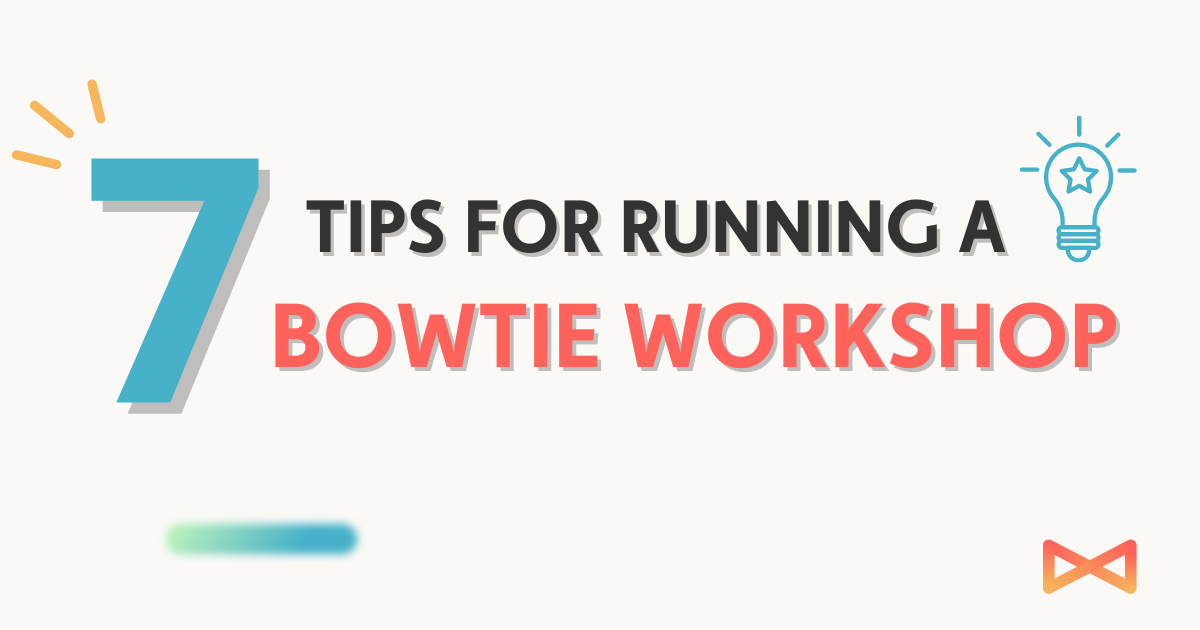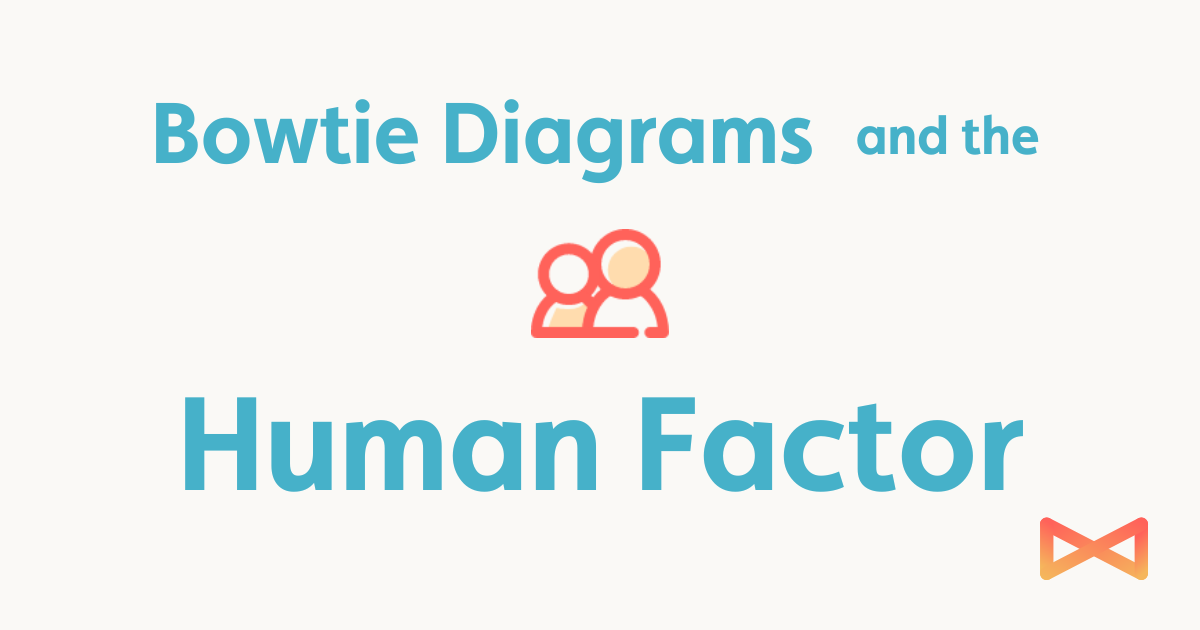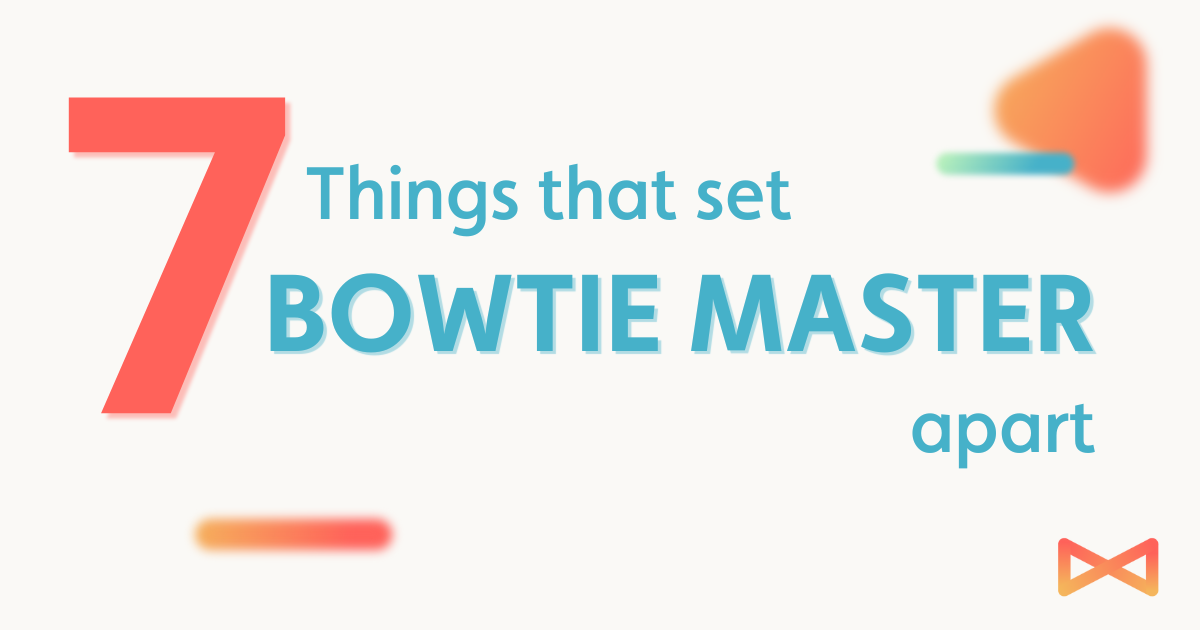In this article, you’ll learn 7 tips that will instantly improve your bowtie diagram workshops, and make them run like a dream!
Tip 1: Choosing the Right Team
A bowtie diagram workshop is a team effort. Ensure your team is made up of individuals with the necessary skills and experience to understand and manage risks effectively. Don’t forget to include the people who are closest to these risks in practice.
We recommend keeping your team between 5 and 10 participants to ensure everyone has an opportunity to participate and the group remains engaged.
You can always send some information out ahead of time – such as our introduction to bowtie diagrams video, just in case the participants aren’t bowtie experts. Don’t limit your workshop to only those who could draw a bowtie diagram in their sleep.
Tip 2: Give Yourself Enough Time
When you’re trying to accommodate multiple people’s schedules, it can sometimes feel like you need to complete the workshop as quickly as possible. However, you really don’t want to be rushing through this, or make people feel like they are not able to contribute.
A few workarounds for this can be to run several smaller sessions, rather than one long session. This also helps keep the team focused. As mentioned in tip 1, you can send out any materials that will help bring your team members up to speed ahead of the workshop, such as the risk scenario you’ll be focusing on in the workshop.
If you are tight on time though, make sure you have enough time at the end of the session to review the diagram as a group. All participants should be aligned in their perceptions of the risk scenario. You can also invite participants to reach out afterwards if they have questions or thoughts later on.
And finally, make sure you give your hardworking participants a few breaks! This can be super helpful to refuel, or even just clear heads for a moment rather than being overwhelmed with loads of information.
Tip 3: Get (or, Be) A Good Facilitator
A facilitator can make or break your workshop. Energise the room, keep discussions on track, and challenge the team when needed. A facilitator with a solid understanding of bowtie diagrams and the subject matter ensures productive discussions and a meaningful outcome.
They should be able to inspire thought-provoking discussions and ensure everyone has their voice heard – while being able to condense ideas and narrow them down to only the most relevant.
Having a clear voice leading the discussions is always helpful in workshops.
Tip 4: Establish Clear Objectives and Audience
Define your workshop’s objective clearly. Are you creating a single bowtie or several? Who is the target audience – the workforce, management, or the regulator?
For example, a building manager could create a bowtie diagram for both their tenants or the building regulator. These two bowties will likely have different levels of detail, terminology, and so on.
Adding metadata is great for providing additional information about the barrier such as type, owner, health and more. Degradation factors are a great way of showing what could cause a barrier to fail.
But remember, these features may not be required for every audience type. Establishing your audience early on helps make this decision easier.
Tip 5: Use The Right Tools
Visibility is key. Ensure everyone can see the bowtie – whether on a shared screen, projector, or whiteboard.
Using software like Bowtie Master can be really helpful here. You can invite multiple participants to view the diagram so that they can access it later, or share via a live link that can be updated at any time.
If you are using software, make sure that you do use something reliable such as Bowtie Master, as there’s nothing worse than technology letting you down on the day of the workshop.
Tip 6: Don’t Be Afraid to Change the Top Event
Choosing the right top event is crucial but challenging, so be prepared for an iterative process.
Once you begin formulating the rest of your diagram, it may become clear that the top event doesn’t necessarily reflect the scenario you’re trying to capture.
Or, you might realise that your top event is too broad, and should actually be split up into multiple diagrams, which is a common scenario. This can ultimately lead to more sessions to create them.
Tip 7: Adjust as Needed
While we’ve given you 7 tips, remember, it’s not a one-size-fits-all approach. You know your team and your risks best. Feel free to adapt these tips to suit your specific situation.
And also feel free to BREAK the rules. Sure, ideally a workshop should be around 5-10 participants, but if you have an A-team of 15, bring them all.
Conducting a collaborative bowtie diagram workshop is a powerful tool for risk management. It allows diverse perspectives, promotes creative problem-solving, and results in higher-quality diagrams.
Choosing when to run a workshop can be key. For example, you may need a revision of your bowtie diagrams during significant organisational changes. If you’re unsure about conducting your own workshop, check out our video ‘Questions to Consider Before a Bowtie Diagram Workshop.’
Conclusion
By following these 7 tips, your organisation can construct high-quality bowtie diagrams, enhancing your risk assessment and management processes, and ultimately contributing to a safer work environment.
Finally, if you do want a top-tier diagramming tool for bowties, reach out to us at Bowtie Master, we’d be more than happy to offer you a free tour of the software and see if it suits your needs.
Good luck with your workshop!
